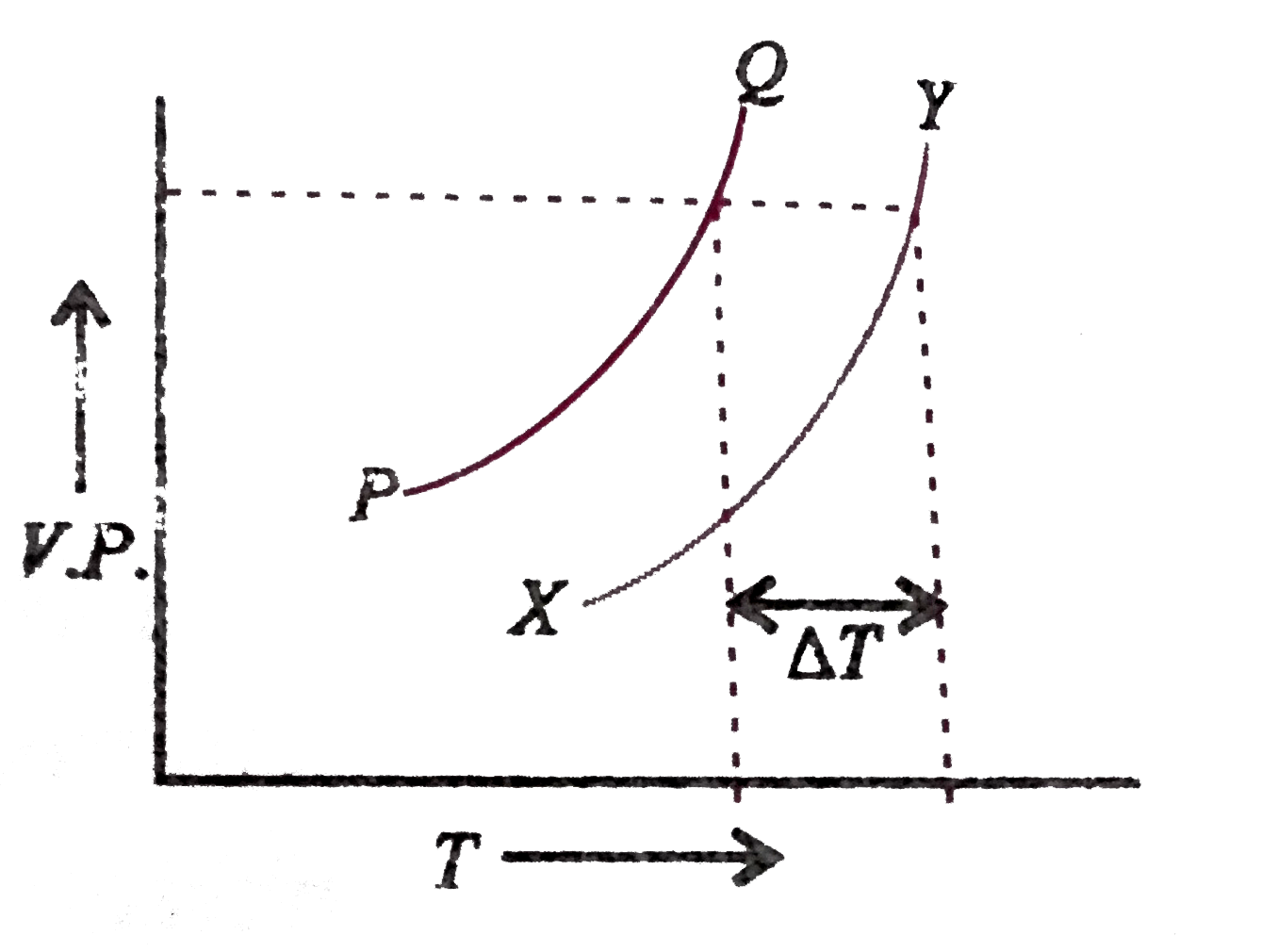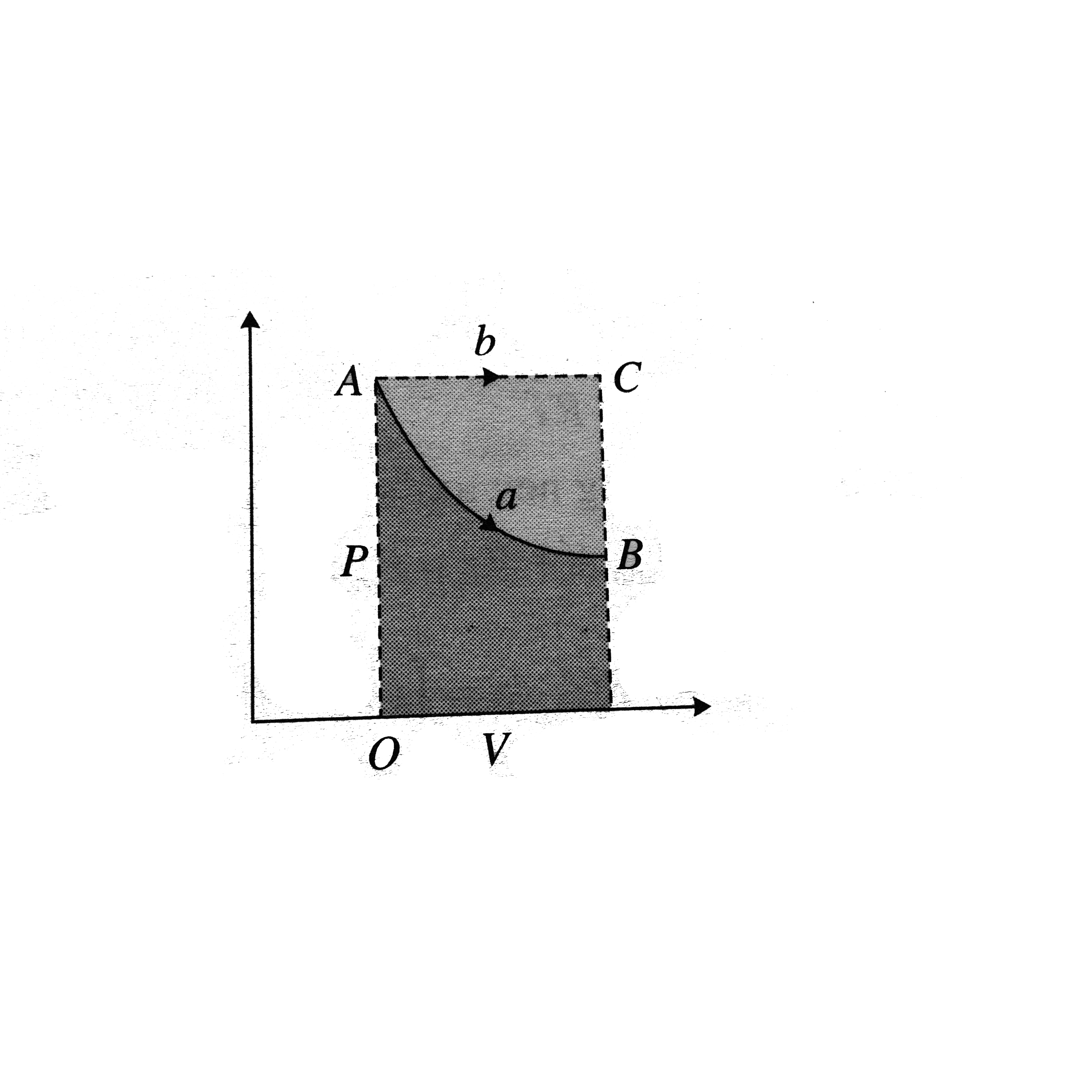Two moles a monatomic gas in state A having critical pressure P0 and temperature 3T0 is taken to a state B having pressure 3P0 and temperature T0/3 by the process of equation P2T = constant. Then state B is taken to state C keeping the volume constant and it comes back to initial state A keeping temperature constant.
a. Plot a P and T graph. (P on the y-axis and T on the x-axis).
Find the net work done and heat supplied to the gas during the complete cycle.
To solve the problem step by step, we will analyze the given states of the gas and the processes involved.
Step 1: Identify the Initial Conditions
- State A:
- Pressure, PA=P0
- Temperature, TA=3T0
- State B:
- Pressure, PB=3P0
- Temperature, TB=T03
Step 2: Analyze the Process from A to B
The process from state A to state B follows the equation P2T=constant.
Using the initial and final states:
P2ATA=P2BTB
Substituting the values:
(P0)2(3T0)=(3P0)2(T03)
This confirms that the process is valid.
Step 3: Calculate Work Done (A to B)
The work done during the process from A to B can be calculated using the formula:
WAB=nR(TB−TA)(1PB−1PA)
Substituting the values:
WAB=2R(T03−3T0)(13P0−1P0)
Calculating this gives:
WAB=2R(−8T03)(−23P0)=−16RT03
Step 4: Calculate Heat Supplied (A to B)
Using the first law of thermodynamics:
QAB=ΔU+WAB
The change in internal energy ΔU for a monatomic gas is given by:
ΔU=nCVΔT=2⋅32R(T03−3T0)=−8RT0
Thus,
QAB=−8RT0+(−16RT03)=−40RT03
Step 5: Analyze the Process from B to C
In this process, the volume is constant, hence:
WBC=0
The change in internal energy is:
ΔUBC=2⋅32R(TC−TB)
Since TC=TA=3T0 and TB=T03:
ΔUBC=2⋅32R(3T0−T03)=8RT0
Thus, the heat supplied is:
QBC=ΔUBC+WBC=8RT0+0=8RT0
Step 6: Analyze the Process from C to A
This is an isothermal process:
WCA=nRTln(VfVi)
Assuming Vf/Vi=27:
WCA=2R⋅3T0ln(27)=6RT0ln(27)
And since it is isothermal:
QCA=WCA=6RT0ln(27)
Step 7: Calculate Net Work Done and Heat Supplied
- Net Work Done:
Wnet=WAB+WBC+WCA=−16RT03+0+6RT0ln(27)
- Net Heat Supplied:
Qnet=QAB+QBC+QCA=−40RT03+8RT0+6RT0ln(27)
Step 8: Plotting the P-T Graph
1. State A: Point at (3T0,P0)
2. State B: Point at (T03,3P0)
3. State C: Point at (3T0,PB) which is the same pressure as A but at a different temperature.
- State A:
- Pressure, PA=P0
- Temperature, TA=3T0
- State B:
- Pressure, PB=3P0
- Temperature, TB=T03
The process from state A to state B follows the equation P2T=constant.
P2ATA=P2BTB
Substituting the values:
(P0)2(3T0)=(3P0)2(T03)
This confirms that the process is valid.
The work done during the process from A to B can be calculated using the formula:
WAB=nR(TB−TA)(1PB−1PA)
Substituting the values:
WAB=2R(T03−3T0)(13P0−1P0)
Calculating this gives:
WAB=2R(−8T03)(−23P0)=−16RT03
Using the first law of thermodynamics:
QAB=ΔU+WAB
The change in internal energy ΔU for a monatomic gas is given by:
ΔU=nCVΔT=2⋅32R(T03−3T0)=−8RT0
Thus,
QAB=−8RT0+(−16RT03)=−40RT03
In this process, the volume is constant, hence:
WBC=0
The change in internal energy is:
ΔUBC=2⋅32R(TC−TB)
Since TC=TA=3T0 and TB=T03:
ΔUBC=2⋅32R(3T0−T03)=8RT0
Thus, the heat supplied is:
QBC=ΔUBC+WBC=8RT0+0=8RT0
This is an isothermal process:
WCA=nRTln(VfVi)
Assuming Vf/Vi=27:
WCA=2R⋅3T0ln(27)=6RT0ln(27)
And since it is isothermal:
QCA=WCA=6RT0ln(27)
- Net Work Done:
Wnet=WAB+WBC+WCA=−16RT03+0+6RT0ln(27)
Qnet=QAB+QBC+QCA=−40RT03+8RT0+6RT0ln(27)
1. State A: Point at (3T0,P0)
2. State B: Point at (T03,3P0)
3. State C: Point at (3T0,PB) which is the same pressure as A but at a different temperature.
Topper's Solved these Questions
- KINETIC THEORY OF GASES AND FIRST LAW OF THERMODYNAMICSBook:CENGAGE PHYSICS ENGLISHChapter:KINETIC THEORY OF GASES AND FIRST LAW OF THERMODYNAMICSExercise:Single Correct
Explore 140 Videos
- KINETIC THEORY OF GASES AND FIRST LAW OF THERMODYNAMICSBook:CENGAGE PHYSICS ENGLISHChapter:KINETIC THEORY OF GASES AND FIRST LAW OF THERMODYNAMICSExercise:Multiple Corrects
Explore 29 Videos
- KINETIC THEORY OF GASES AND FIRST LAW OF THERMODYNAMICSBook:CENGAGE PHYSICS ENGLISHChapter:KINETIC THEORY OF GASES AND FIRST LAW OF THERMODYNAMICSExercise:Exercise 2.2
Explore 28 Videos
- KINETIC THEORY OF GASESBook:CENGAGE PHYSICS ENGLISHChapter:KINETIC THEORY OF GASESExercise:Compression
Explore 2 Videos
- LINEAR AND ANGULAR SIMPLE HARMONIC MOTIONBook:CENGAGE PHYSICS ENGLISHChapter:LINEAR AND ANGULAR SIMPLE HARMONIC MOTIONExercise:Single correct anwer type
Explore 14 Videos
Similar Questions
In the graph plotted between vapour pressure (V.P.) and temperature (T),

View SolutionThree moles of an ideal gas at a pressure PA and temperature TA is isothermally expanded to twice its initial volume. It is then compressed at constant pressure to its original , volume. Finally the gas is compressed at constant volume to its original pressure PA
(a) Sketch the P-V and P-T diagrams for the complete process.
(b) Calculate the net work done by the gas, and net heat supplied to the gas during the complete process.
View Solution
Knowledge Check
The equation of state for 5 g of oxygen at a pressure P and temperature T, when occupying a volume V, will be
APV=(532)RTBPV=5RTCPV=(52)RTDPV=(516)RTThe equation of state for 5 g of oxygen at a pressure P and temperature T, when occupying a volume V, wll be
APV =(5/32) TRBPV=5RTCPV=(5/2) RTDPV= (5/16) RT
Three moles of an ideal gas (Cp=72R) at pressure, PA and temperature TA is isothermally expanded to twice its initial volume. It is then compressed at constant pressure to its original volume. Finally gas is compressed at constant volume to its original pressure PA.
(a) Sketch P-V and P-T diagrams for the complete process.
(b) Calculate the net work done by the gas, and net heat supplied to the gas during the complete process.
View SolutionThe equation of state for 5 g of oxygen at a pressure P and temperature T, when occupying a volume V, will be
View SolutionThe equation of state for 5 g of oxygen at a pressure P and temperature T, when occupying a volume V, will be
View SolutionA quantity of gas occupies an initial volume V0 at pressure p0 and temperature T0. It expands to a volume V (a) constant temperature and (b) constant pressure. In which case does the gas do more work ?

View SolutionAn ideal gas is found to obey the law V2T=constant. The initial pressure and temperature are P0 and T0. If gas expands such that its pressure becomes P04, then the final temperature of the gas will be
View SolutionFour moles of an ideal gas is initially in a state A having pressure 2×105N/m2 and temperature 200 K . Keeping pressure constant the gas is taken to state B at temperature of 400K. The gas is then taken to a state C in such a way that its temperature increases and volume decreases. Also from B to C, the magnitude of dTdV increases. The volume of gas at state C is eaual to its volume at state A. Now gas is taken is initial state A keeping volume constant. A total of 1000 J heat is rejected from the sample in the cyclic process. Take R=8.3J/K/mol.
The work done by the gas along path B to C is
View Solution